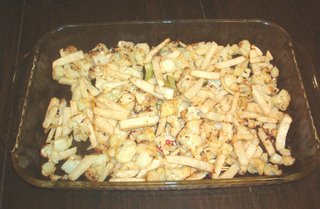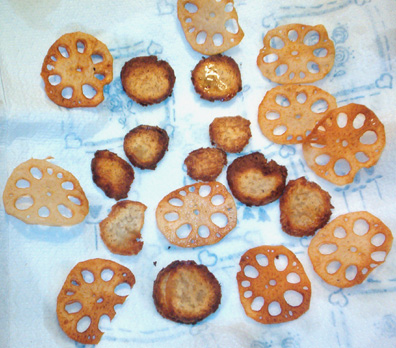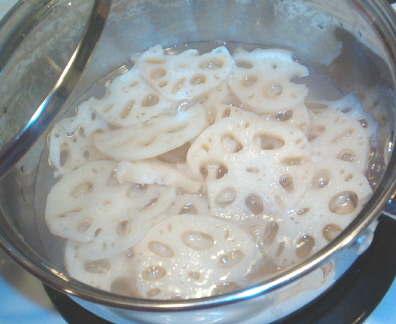Small amount of oil (I used olive oil)
1 onion (medium to large), diced
2 to 4 cloves garlic
3 to 5 carrots, washed and sliced thin
1 head cauliflower, cut into bite-sized chunks (1/2" to 1" or so)
Other vegetables as desired (I added 1/4 head of green cabbage, sliced)
2 cups lentils, rinsed and drained
About 10 cups water
Large pot
Saute onion and garlic in oil in the bottom of the pot until beginning to get soft and brown (carmelized). Add carrots and cauliflower, stirring and cooking slightly. Add water and lentils, bring to a boil, and simmer over medium to low heat until lentils are tender, about an hour.
Depending on what other vegetables you add, you may wish to add them when you add the lentils, or wait until closer to the end of cooking. I added cabbage about halfway through cooking.
If desired, add up to 1 lb. sausage about halfway through cooking also.
(I buy a safe uncured sausage made with just meat and fresh herbs at a local butcher shop [Butcher Boys' ground Italian or Breakfast sausage], or there are a few safe brands of chicken sausage available commercially) If you leave out the sausage, this is a vegan recipe. Carmelizing the onions and garlic until they are brown makes the flavor and color much richer, and the carmelized onions and carrots give the soup a sweet flavor.
Just before stirring, add salt and pepper to taste if desired. With the sausage, I found we didn't need any further salt or spices.
This recipe is grain-free and nightshade-free, as long as you are careful about sausage ingredients. The cauliflower gives the starchy, mild flavor that takes the place of rice, noodles or potatoes in this recipe.
If you leave out the sausage, it's vegan. We get sausage with no additives other than herbs and spices at a local butcher shop or natural-food store. Our sausage contained ground chicken, salt, fennel seed, caraway seed, coriander, black pepper, garlic, thyme, and bay leaf. For even more flavor, you could use vegetable broth or bone broth in place of all or part of the water.








